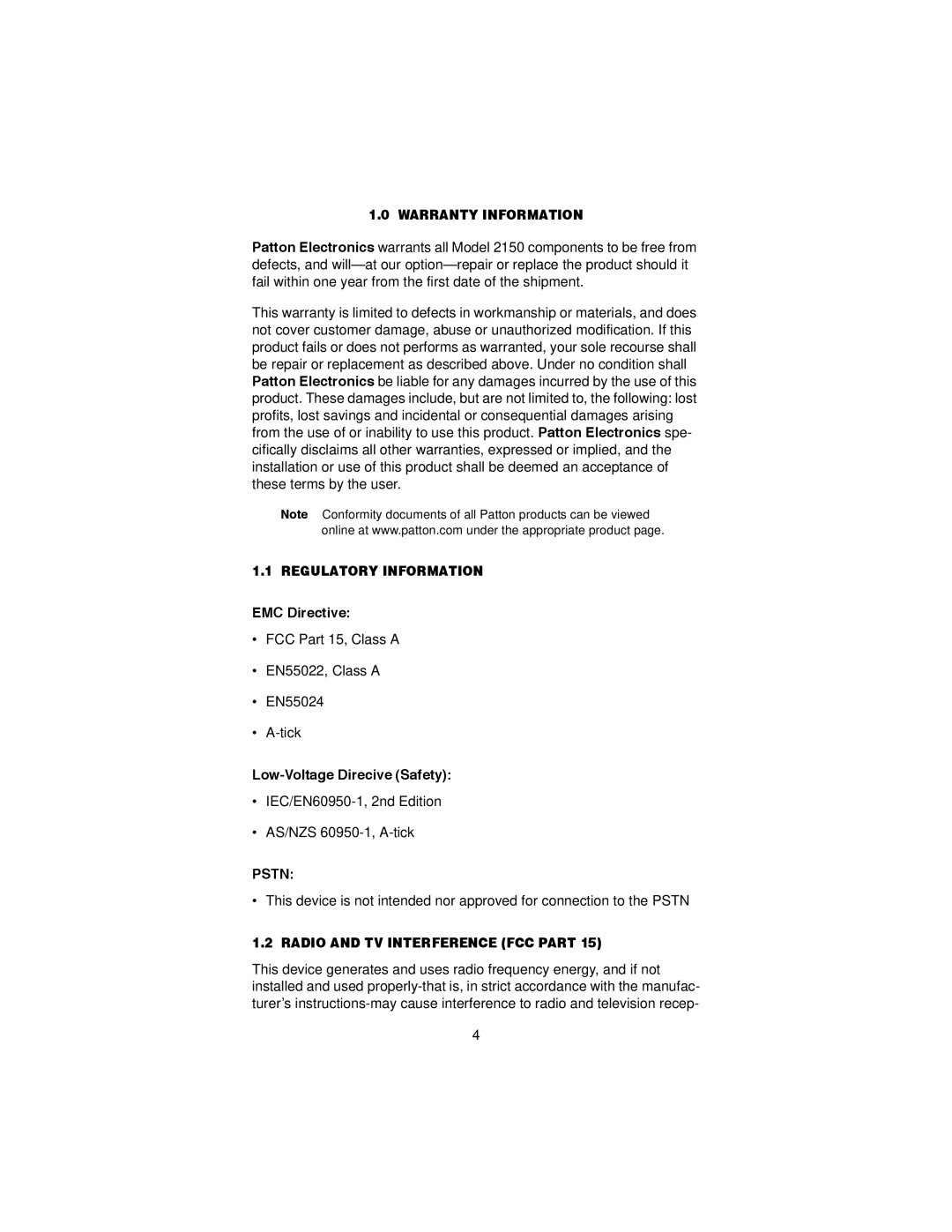2150 specifications
The Patton Electronics 2150 is a versatile, high-performing device designed for a wide range of telecommunications applications. Known for its robust build and reliability, the 2150 serves as a critical component in industrial and commercial networking environments.One of the main features of the Patton 2150 is its ability to function as a versatile media converter. It can seamlessly convert various communication media, including Ethernet to serial interfaces, making it an essential tool for integrating legacy systems with modern technologies. This capability makes the device particularly useful in environments where both older and newer technologies must work together.
The Patton 2150 supports multiple interfaces, including RS-232, RS-485, and RS-422 serial communication. This flexibility allows for straightforward integration into diverse systems, catering to various communication needs. In terms of data rates, the 2150 offers speeds of up to 115.2 kbps, ensuring efficient data transmission for both short-range and long-range applications.
Another significant characteristic of the Patton 2150 is its compact and durable design. Housed in a sturdy enclosure, the device is built to withstand harsh industrial conditions, making it suitable for use in factories, transportation systems, and other challenging environments. The device can be installed easily, with options for both desktop and wall-mounted setups.
In addition, the Patton 2150 employs advanced technologies to ensure data integrity and security. Features such as error-checking mechanisms help maintain reliable data transmission, while built-in surge protection safeguards the device against electrical disturbances. This feature set not only enhances the operational reliability of the device but also contributes to its longevity.
With power options including PoE (Power over Ethernet) and standard power adapters, the Patton 2150 offers flexibility in how it can be deployed. The device also incorporates LED status indicators, providing real-time feedback on connectivity and operational status, which aids in troubleshooting and monitoring.
In conclusion, the Patton Electronics 2150 stands out for its comprehensive feature set, robust build quality, and versatility. It serves as an indispensable solution for businesses looking to bridge the gap between legacy systems and modern networking technologies, ensuring seamless communication across various platforms while maintaining high standards of performance and reliability.
